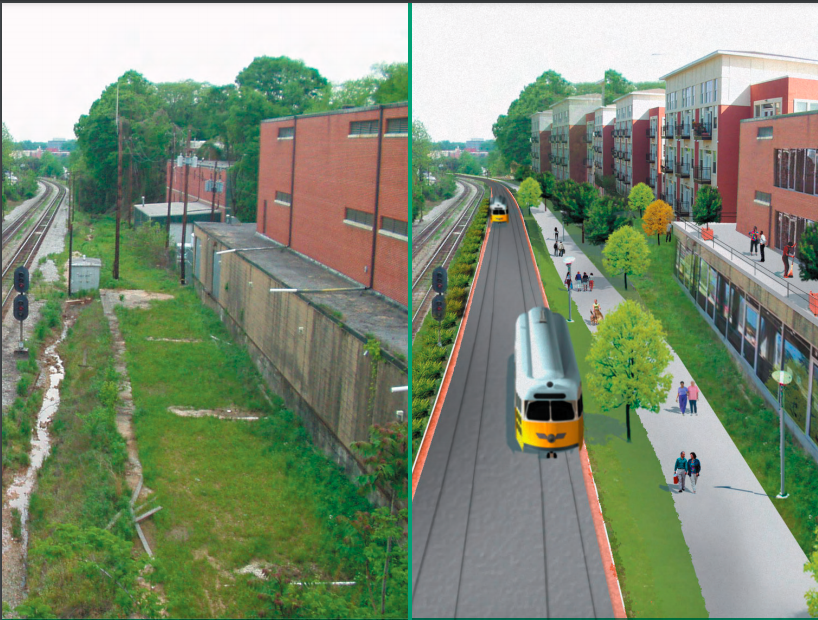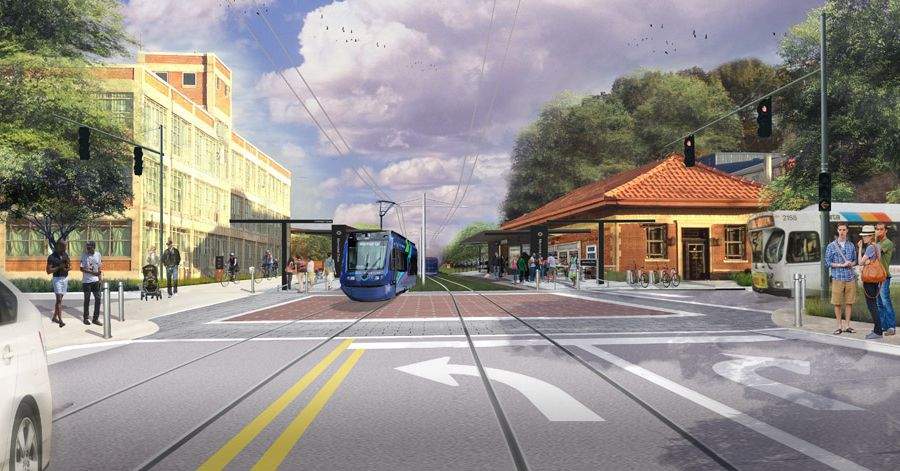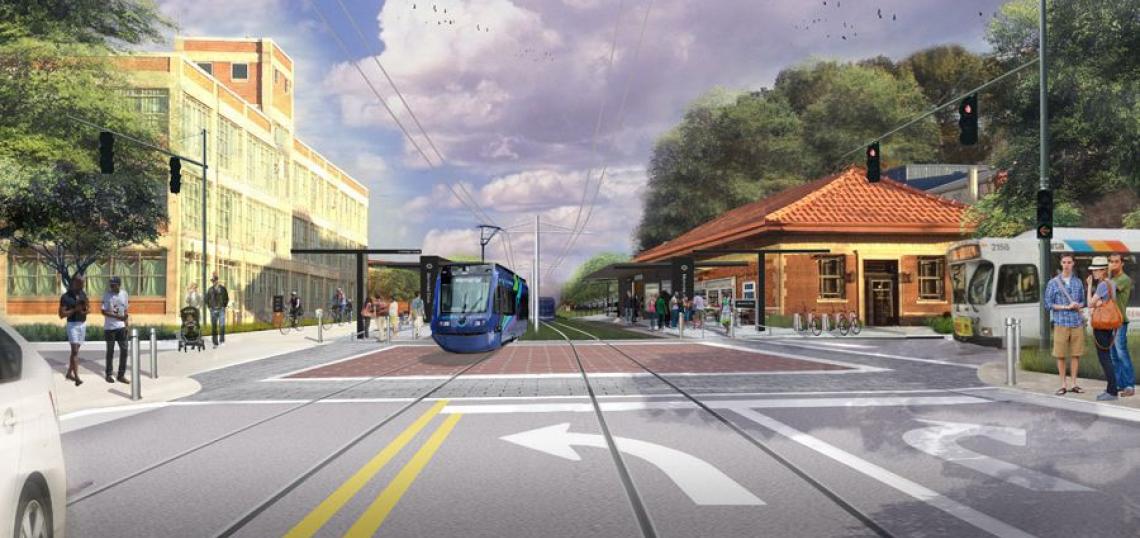As talk of transportation financing dominates national headlines, MARTA’s Board of Directors has taken a “major step” that officials say will improve the chance of federal cash helping to foot the bill for light-rail transit along the Atlanta BeltLine.
On the heels of scoring an estimated $284 million in the latest round of COVID-19 rescue funds, MARTA leaders voted last week to authorize a $500,000 feasibility study by engineering firm Vanasse Hangen Brustlin.
MARTA officials call the analysis crucial for requesting federal funding to extend the Atlanta Streetcar system into the BeltLine corridor, determining how to mesh light rail with existing MARTA lines around the city, and addressing connectivity “gaps” they’ve identified in a previous study.
MARTA has reviewed the BeltLine’s initial environmental and engineering studies for what’s called the Streetcar East extension—an alignment from Jackson Street in Sweet Auburn to the BeltLine at Irwin Street, then north to Ponce City Market—and other potential light-rail segments.
MARTA found “significant gaps that must be addressed,” as agency CEO and general manager Jeffrey Park said in a prepared statement.
 An early rendering depicting how rail could be incorporated with new development along parts of the trail. Atlanta Development Authority; 2005
An early rendering depicting how rail could be incorporated with new development along parts of the trail. Atlanta Development Authority; 2005
Specifically, MARTA found transit connectivity voids between Ansley Mall and Lindbergh Center rail station, and also to the south, between today’s streetcar line and Interstate 20. Options for linking BeltLine light rail to MARTA’s rail stations, and how it might run alongside private railroad tracks, “have not been adequately addressed and require more evaluation,” per MARTA.
“This is typical for a project of this size,” Parker noted. The recently approved study “will examine technical issues and risks involved in building light rail on the BeltLine and give us a better sense of overall project costs and feasibility.
“Right now, we have lines on a map with little to no connectivity,” Parker continued. “For this project to progress and ultimately succeed, it must connect to the existing MARTA system.”
 How light rail could one day meet Memorial Drive alongside the existing Eastside Trail. Atlanta BeltLine Inc.
How light rail could one day meet Memorial Drive alongside the existing Eastside Trail. Atlanta BeltLine Inc.
Also expected to be addressed in the study are environmental concerns and documentation for public outreach and future planning.
BeltLine CEO Clyde Higgs voiced his support, calling transit “a vital component of the BeltLine vision to ensure greater connectivity and accessibility around the corridor” in a MARTA press release.
The engineering analysis is expected to take six months. After that, MARTA and BeltLine heads will review the findings and determine what to do next, officials said.
• BeltLine teams with PATH to speed construction of Northwest Trail (Urbanize Atlanta)






